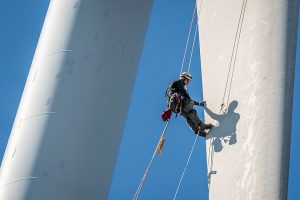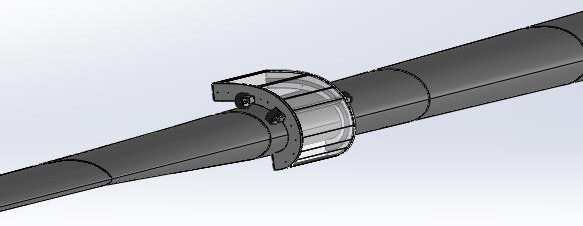Robotic blade maintenance changes the economics and assumptions behind current wind turbine blade maintenance practices:
Safety
Eliminate the need for human rope access to the blade hundreds of feet above the surface. Unfortunately, physical access to wind turbine blades that are hundreds of feet above the ground currently requires human technicians to access the blades via ropes or high lift aerial cranes. Work is slow, dangerous, and can only be completed when there are optimal conditions.

Speed
Complete maintenance tasks that take 2-3 days using rope access in under two hours. A group of five robots can service a 100 turbine field in 2-3 weeks vs a year or more for manual rope access.

Cost
Cut maintenance costs 10% while reducing turbine production lost to maintenance shut-ins. Labor and blade access currently represent >80% of the costs for both blade maintenance and performance enhancement done using .

Performance Enhancement
Increase revenues and turbine ROI by installing performance enhancements.

Staffing
Reallocate scarce wind turbine technician talent to complete maintenance and repair tasks that cannot be completed using robots and reduce the impact of shortages of trained technicians.

Robotic vs Rope Maintenance
Robowind
- Robotic Maintenance is Safer
- Eliminates the Need for Dangerous Rope Access Hundreds of Feet Above the Ground
- Fast Robotic Process in Under Two Hours Allows Completion in Low Wind Conditions Minimizing Risk of Wind Conditions Changing During Maintenance
- If an Unexpected Wind Gust Occurs, High Winds Increase the Robot’s Grip on the Blade With No Threat to Technicians
- In the Unlikely Event that the Robot Falls From the Blade, It will Automatically Deploy a Parachute to Safely Control the Fall and Protect Both the Robot and Technicians on the Ground
Rope Access
- Dangerous: Two technicians hang on ropes hundreds of feet above the ground doing maintenance tasks while a third supports them from the nacelle or the ground
- Time Consuming: Takes 8-10 hours per blade with additional time delays waiting for optimal weather conditions with low winds and no precipitation
- Costly: Costs exceed $300 per hour making many maintenance and performance enhancement tasks uneconomic due to high labor costs
- Slow: Servicing an entire 100+ turbine field takes over a year
